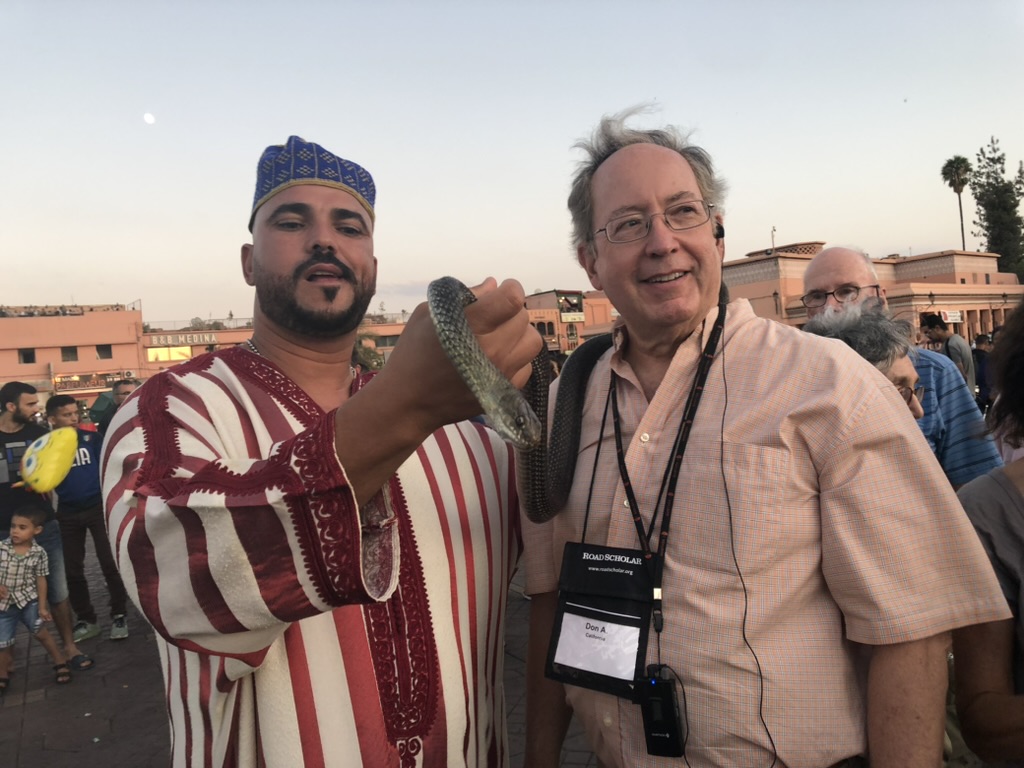
It’s a museum. It’s a garden. It’s both. And it’s awesome.
It’s the Frederik Meijer Gardens & Sculpture Park
… in Grand Rapids, Michigan.
If you’ve been to “normal” museums, you’ve seen sculptures mostly inside the museums. You know—Dégas, Michelangelo, Rodin, Warhol, etc. However, part of the Rodin Museum in Paris is outside, and be assured, some of the sculptures at this park are inside, too!
When you first arrive, you might find that the Frederik Meijer outdoor sculpture park is best viewed from the docent-led tram ride. (We were glad we did.) You’ll learn about how Frederik Meijer (billionaire chairman of the Meijer hypermarket chain) donated a large portion of the land for the park, and you’ll hear about the sculptures and artists. You can then visit any area that particularly interests you and explore the inner beauty of each of the glorious sections at your leisure.
Is it really that good?
Well, this park was voted “Best Sculpture Park in the United States by readers of USA Today in 2023 & 2024.” I’d put it in a bucket list category.
One of the highlights is the 24-foot-tall “The American Horse” statue—there are only two in the world.

I took the photo on the left in 2024. The next one gives you an idea of the relative size. That was me “holding up” its front foot in 2017. It was big then, and it’s big now!

The place is huge. It’s 158 acres, which doesn’t sound that big until you realize an American football field is about 1.32 acres, so the park’s area is about 120 football fields.
Massive and Small Sculptures in Exquisite Gardens
The gardens elevated the artwork, and vice versa. It was clear the groundskeepers had lots of help! These critters must surely sneak out at night to weed, clean, and clip. 

This guy was supposed to oversee their work, but he’s definitely taking a break.

I’d love to tell you all the facts and figures about this wonderful, do-not-miss-it Midwest visiting destination, but I think you’ll find a lot more (evergreen) information on the website.
Here’s why. As I try to write about the coolness of this unique spot, I find I’ve missed the fact that there are many gardens within the garden. The Children’s Garden invites young people to play, learn, and explore. The relatively new (2015) Japanese Garden takes tranquility, simplicity, and beauty to an exquisite height. You can check out all the gardens here.
In all, there are five indoor theme gardens, outdoor gardens, nature trails, and a boardwalk; sculpture galleries; and a permanent sculpture collection. The website is temptingly lovely. But there’s nothing like visiting in person. It’s definitely a United States of America bucket list item worthy of Going on An Adventure.
If You Go
If you go, you might try to hit it before a famous midwest winter storm chases the sculptures inside. 🙂
Click HERE for ticket information.

 Enter Fort Gratiot Light. Pronounced Fort grǎ’-chit, this quintessentially iconic lighthouse is the oldest in Michigan (constructed in 1825) that is still in active service.
Enter Fort Gratiot Light. Pronounced Fort grǎ’-chit, this quintessentially iconic lighthouse is the oldest in Michigan (constructed in 1825) that is still in active service.


 I’m looking at one of the smaller frescos, and my husband and I are standing in front of an entire wall of one of the murals.
I’m looking at one of the smaller frescos, and my husband and I are standing in front of an entire wall of one of the murals.
 diaspora and contemporary issues of race, class, and popular cu
diaspora and contemporary issues of race, class, and popular cu lture.”
lture.” uare feet, it is slightly smaller than the Gamble house but in a totally different style now. The remodel was redesigned as a Tudor revival-style home, but architect Joseph J. Blick originally thought created it as a craftsman home for Gertrude Potter Daniels, who paid $15,000 to build it. It’s hard to believe!
uare feet, it is slightly smaller than the Gamble house but in a totally different style now. The remodel was redesigned as a Tudor revival-style home, but architect Joseph J. Blick originally thought created it as a craftsman home for Gertrude Potter Daniels, who paid $15,000 to build it. It’s hard to believe!

 Perhaps I’ve traveled too far. Perhaps not enough.
Perhaps I’ve traveled too far. Perhaps not enough.